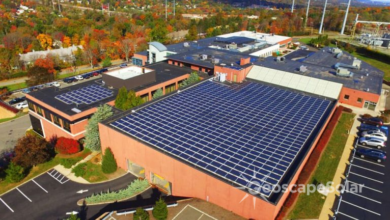Commercial Property Maintenance Best Practices for Long-Term Asset Value

Commercial property maintenance is essential for preserving the value and functionality of a building while ensuring tenant satisfaction. It involves a proactive approach to upkeep that prevents costly repairs, enhances safety, and supports long-term investment stability.
Effective maintenance requires a strategic plan that addresses routine inspections, repairs, and upgrades tailored to the specific needs of the property. By staying ahead of potential issues, property owners can reduce unexpected expenses and maintain a positive reputation with tenants.
Advances in technology are also playing a significant role, enabling more efficient management and cost savings. Understanding these fundamentals helps property managers and owners create practical solutions that protect their assets and optimize operational efficiency.
Essential Aspects of Commercial Property Maintenance
Maintaining commercial properties requires a focused approach to prevent costly repairs and ensure operational efficiency. Key factors include managing equipment longevity, early problem detection, and keeping critical systems running smoothly.
Preventive Maintenance Strategies
Preventive maintenance involves regular service tasks scheduled to avoid equipment failure and reduce emergency repairs. It prioritizes inspections, lubrication, adjustments, and replacement of worn parts before breakdowns occur.
This approach extends the lifespan of machinery and building components while controlling maintenance costs. Tasks often include roof checks, plumbing inspections, elevator servicing, and electrical system assessments performed monthly or quarterly.
Tracking a detailed maintenance schedule ensures that no essential task is overlooked. Digital tools or software can assist in managing these schedules efficiently.
Routine Inspections
Routine inspections act as the first line of defense in property upkeep. They involve systematic checks of structural elements, safety features, and tenant areas to spot issues early.
Daily or weekly walk-throughs help identify hazards like water leaks, faulty lighting, blocked emergency exits, and damaged flooring. Documenting findings allows for timely repairs and supports compliance with safety regulations.
Inspections should cover both interior and exterior spaces, focusing on cleanliness, security systems, and building accessibility.
HVAC System Servicing
HVAC systems require regular servicing to maintain indoor air quality and energy efficiency. This includes cleaning filters, calibrating thermostats, and checking refrigerant levels.
Effective HVAC maintenance reduces operational costs by maximizing system efficiency and preventing breakdowns during peak usage. Seasonal inspections before summer and winter ensure optimal performance when demand is highest.
Qualified technicians should handle servicing to maintain warranty compliance and ensure safety standards are met.
See also: Blending Tradition with Modern Architecture: Marble Mandirs for Developers
Key Services in Commercial Property Maintenance
Effective commercial property maintenance requires attention to both the property’s appearance and its structural integrity. Essential services focus on the care of outdoor areas, cleanliness inside the building, and timely repairs to prevent larger issues.
Landscaping and Exterior Care
Landscaping shapes the property’s curb appeal and impacts tenant satisfaction. Regular lawn mowing, tree trimming, and seasonal planting are necessary to maintain a clean, inviting exterior.
Proper irrigation system maintenance prevents water waste and keeps greenery healthy. Exterior care also involves cleaning gutters and power washing surfaces to avoid damage from dirt and debris buildup.
In addition, parking lots require regular inspection and repair to address cracks, potholes, and proper signage. This ensures safety for visitors and prolongs the lifespan of paved areas.
Janitorial Services
Janitorial services maintain the cleanliness and hygiene of commercial spaces. This includes daily cleaning of common areas, restrooms, and office spaces to meet health and safety standards.
Waste management and recycling programs are integral to janitorial routines, supporting sustainability goals. Attention to detail, such as floor care and window cleaning, enhances the professional appearance of the property.
Professional janitorial teams also manage supply inventories for restrooms and break rooms, ensuring essentials are stocked and accessible.
Building Repairs
Timely building repairs prevent minor issues from escalating into costly problems. This includes fixing plumbing leaks, electrical faults, and HVAC malfunctions.
Structural repairs target wear and tear in roofs, walls, and foundations. Regular inspections help identify these issues early, allowing prompt action.
By addressing repairs quickly, property owners protect tenant safety, maintain compliance with regulations, and preserve the property’s value over time.




